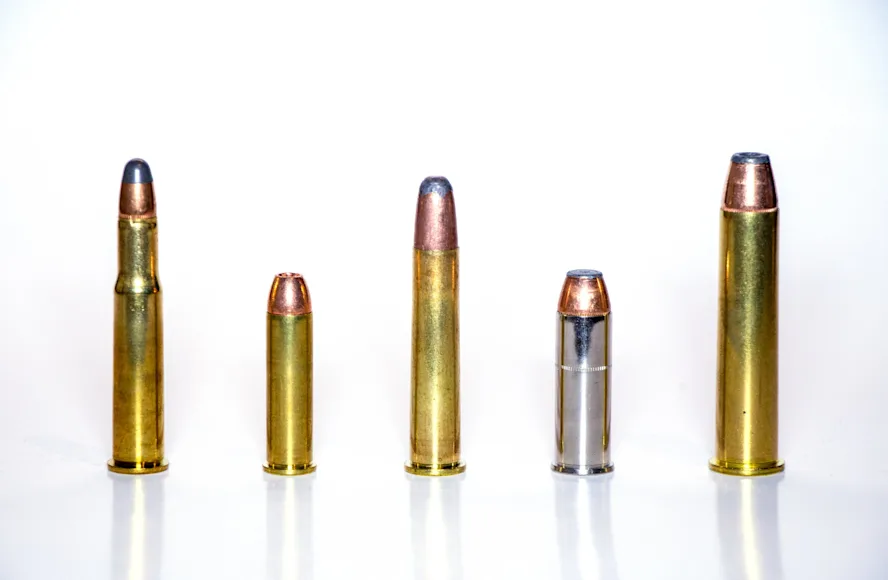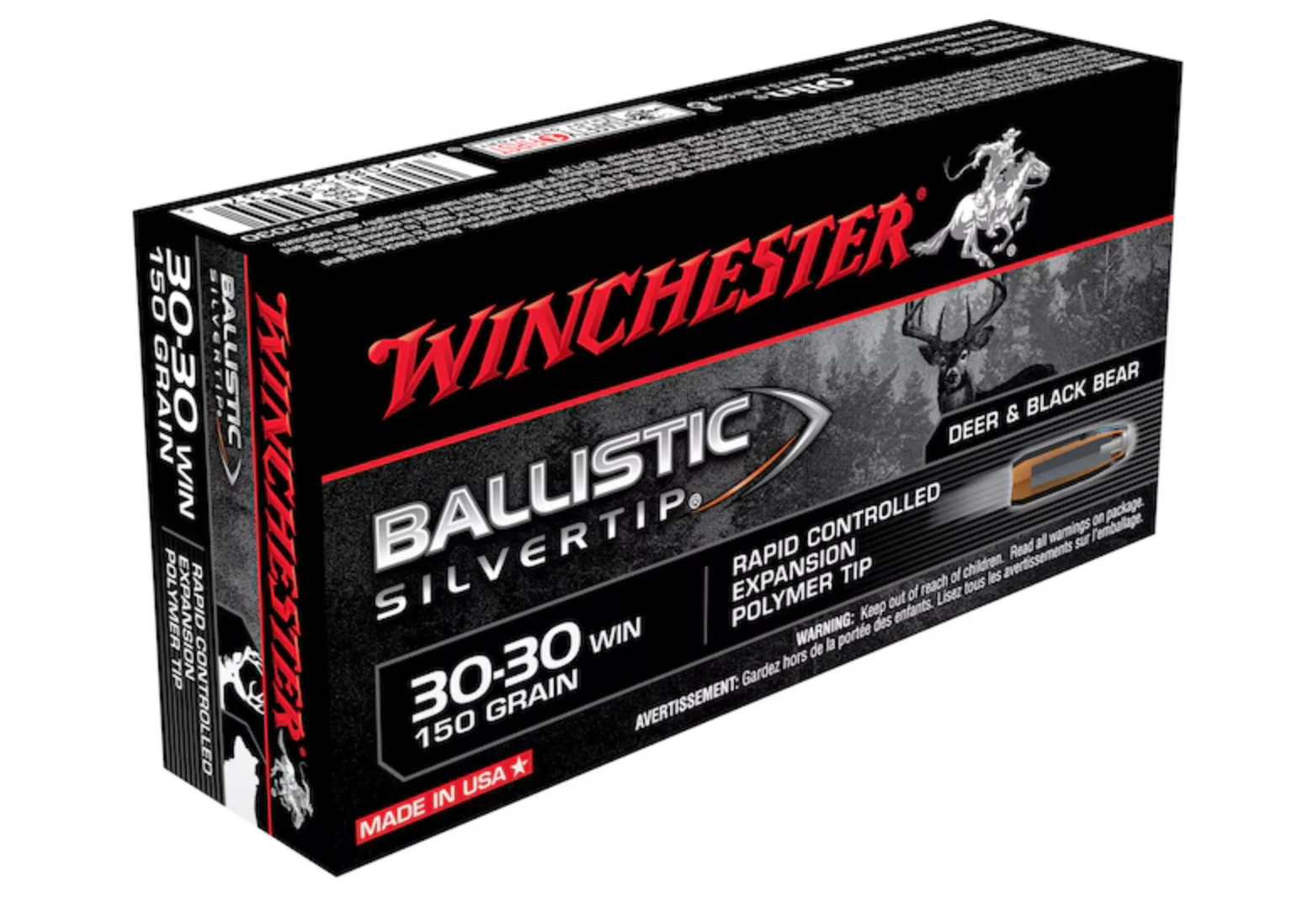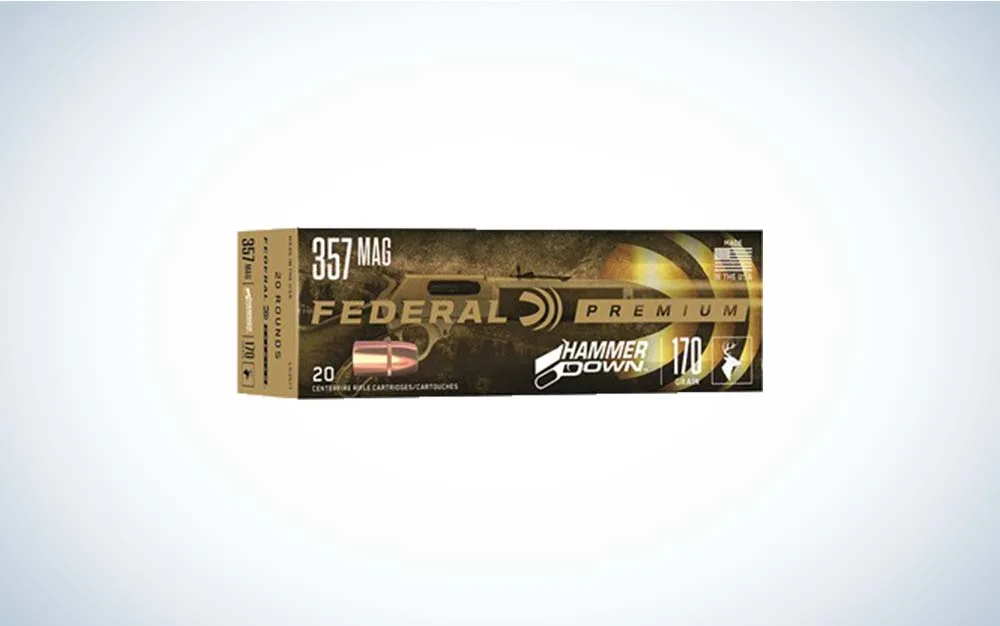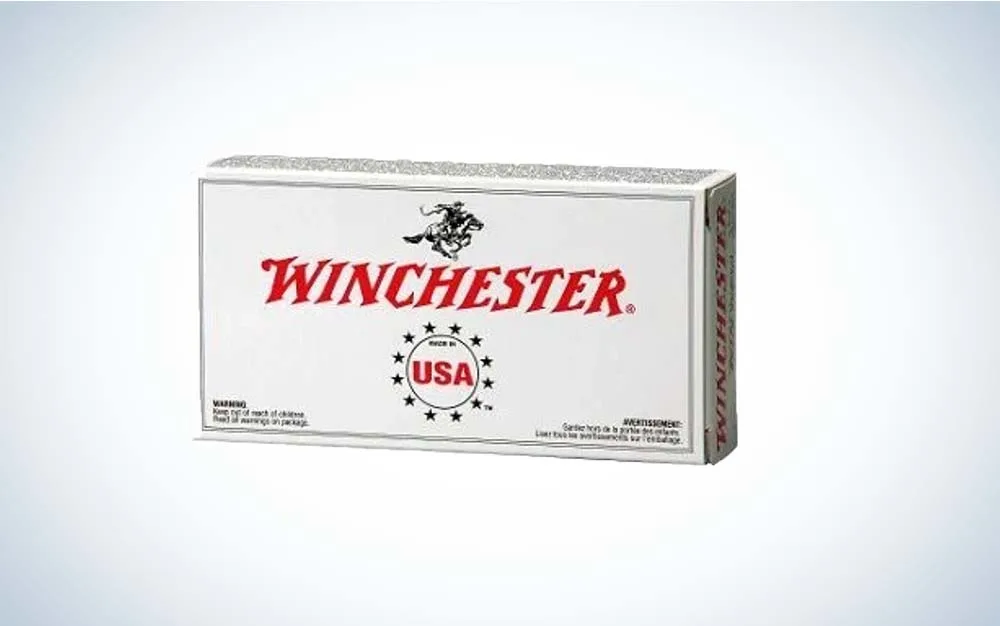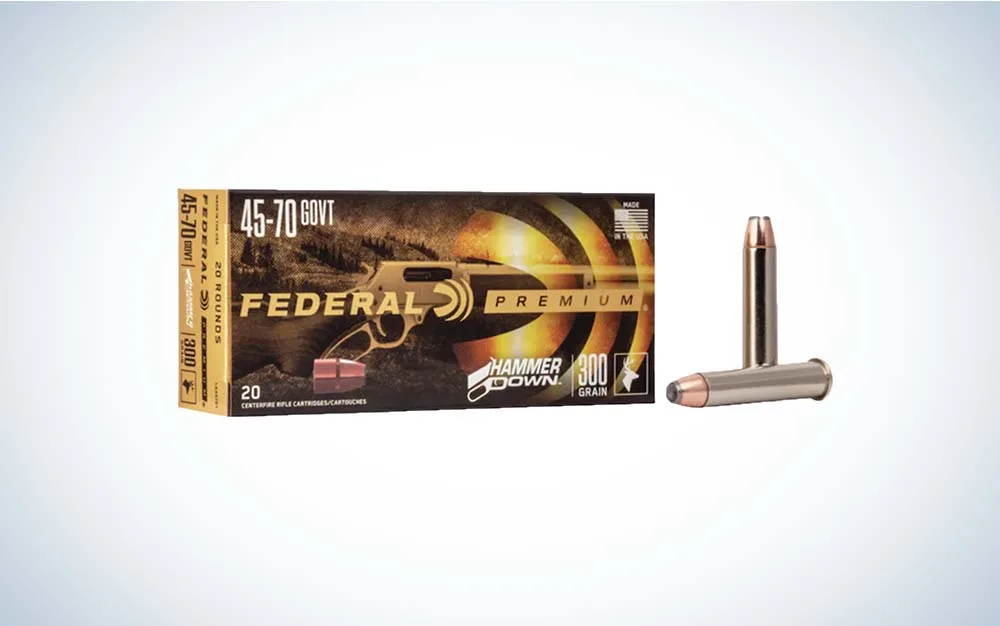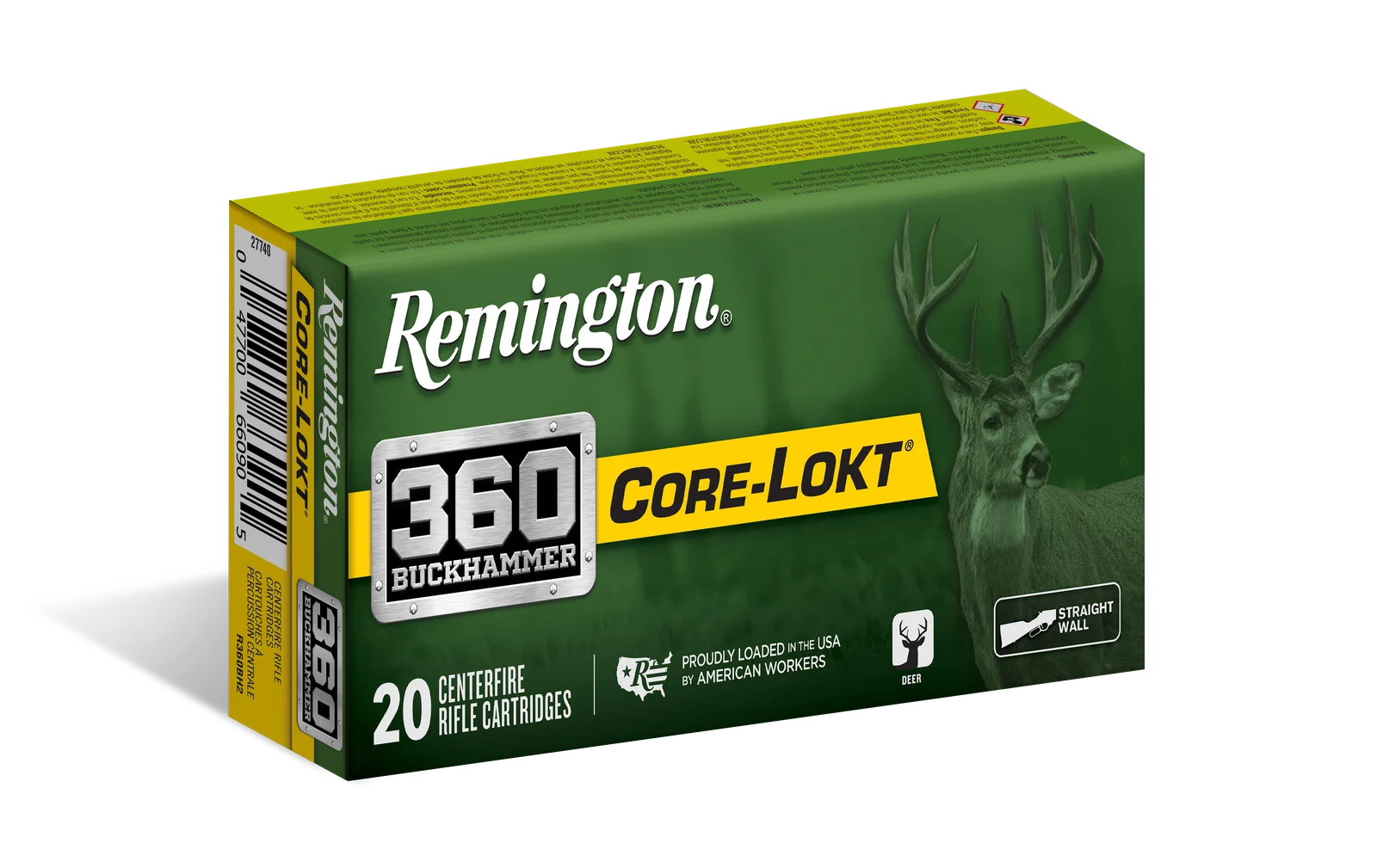We may earn revenue from the products available on this page and participate in affiliate programs. Learn more ›
Most hunters today are focused on what might be called fast-twist centerfire rifle cartridges—essentially new takes on older cartridges, designed with high ballistic coefficient bullets in mind. This is driven by the desire for hunters to shoot at animals at ridiculously long distances. However, there’s still a breed of hunter out there who thinks hunting should be done with your feet instead of feet per second. They admire easy-carrying, fast-handling, traditional, lever-action rifles. Sadly, there aren’t a lot of lever gun cartridges to choose from anymore.
The first successful lever-action rifle chambered for a centerfire cartridge was the Winchester 1873 in 44-40 Winchester. Since then, traditional lever guns have been chambered for the 25-20, 32-20, 38-40, 33, 348, and 38-55 Winchester cartridges, plus the 32 Winchester Special. The list also includes revolver cartridges like the 38 Special, 357 Magnum, 44 Magnum, 45 Colt, and 454 Casull. As well as the more modern 30-30, 307, 356, and 375 Winchester, the 308 and 338 Marlin Express, and let’s not forget the fantastic 7×30 Waters. There was also a plethora of black-powder lever-gun cartridges similar to the 45/70. Now there are only about five left standing that have any real support from ammunition or firearms manufacturers.
The Last Lever-Action Cartridges Left Standing
30-30 Winchester
At one time the 30-30 Winchester was the most popular lever-gun cartridge. Nowadays, many modern hunters relegate it for use in a starter gun, thinking it hardly suitable for whitetail deer. The truth is, every big game animal in North America has been taken with a 30-30. In his early days in Africa, professional hunter Walley Johnson used a 30-30 to take several African lions. The cartridge has been around so long ammunition manufacturers have absolutely perfected the loads for it. At 100 yards, Remington’s 150-grain Core-Lokt load is a stellar performer, penetrating about two feet in 10 percent ordnance gelatin, with the bullet upsetting with a frontal diameter of more than a half-inch.
I’ve done a good bit of hunting with the 30-30 Winchester, using it for hogs and deer, and I even took one to Africa. Marlin just announced it will soon return their famous Model 336 to production, Henry offers nine 30-30 rifles, and Winchester has five 30-30 lever guns, including a very nice Deluxe Sporting Rifle retailing for more than two grand. Beyond that, the used market is flooded with them, and there are nearly 40 factory loads offered. The 30-30 Winchester is the eternal carbine cartridge. I believe it’s the one rifle every American should own.
357 Magnum
Of all the popular lever-action cartridges, I think the 357 Magnum is the most overlooked for hunting. Yes, a 357 lever gun makes a great companion to a 357 Magnum revolver, and yes it’s very comfortable to shoot. But what many don’t realize is how effective this cartridge can be out of a rifle.
Federal’s 170-grain HammerDown load for the .357 Magnum is specifically designed for lever guns. The rim of the cartridge case has been chamfered for easy loading. The bullet has been optimized for rifle velocities. And it’ll show meaningful expansion when impacting as slow as 1100 fps. This means it’s good to go for deer out past 150 yards.
There are also a lot of lever guns chambered for the 357 Magnum. Henry has 11 models, and the word is Marlin will soon have the 1894 back in production. Out of a 16-inch barrel, you can expect as much as a 500 fps increase over velocities from handguns. Some who hunt over hounds, where it’s easy to make a good shot on a treed critter, even use it for bear and mountain lion. I have lever guns in 30-30, 35 Remington, and 45/70, but my 357 lever gun gets a lot of use, too.
44 Magnum
Introduced in 1954, the 44 Magnum cartridge was intended as a revolver cartridge. It was partly vaulted to stardom in 1971 when it co-starred with Clint Eastwood in the “Dirty Harry” movie. Though the cartridge has a bit too much recoil and is housed in handguns a bit too large for personal protection, it has become very popular for handgun hunting. Ruger offered the 44 Magnum in a semi-automatic and a bolt-action rifle, and Remington chambered it in their affordable 788 bolt-action rifle. But as a rifle cartridge, the 44 Magnum found its best home in Marlin’s 1894. By the way, the 44 Magnum is not a .44-caliber cartridge, it fires a 0.429-inch diameter bullet, and is a perfect example of why decimal points don’t belong in cartridge names.
Marlin was purchased by Ruger in 2020, but they’ve yet to reintroduce their Model 1894. Sources tell me it’s soon to come, but in the meantime, there are quite a few other lever guns available for the 44 Magnum from manufacturers like Chiappa and Henry. And of course, there are lots of used 44 Magnum Marlin 1894s out there. Federal’s HammerDown 270-grain 44 Magnum load has a muzzle velocity of about 1700 fps and out of a short-barrel lever gun it will penetrate to nearly two feet and the bullet will upset with about a ¾-inch frontal diameter. This and similar loads make the 44 Magnum a fantastic lever gun cartridge for a lot of big game animals out to around 150 yards or so.
45/70 Government
The 30-30 Winchester and the 30/06 Springfield are often considered the two most iconic American rifle cartridges. They’ve withstood the test of time. But they’re not the oldest or the most versatile. The 45/70 was introduced in 1873, 21 years before the 30-30 and 33 years before the 30/06. Originally designed for the Trapdoor Springfield, the 45/70 gained its current fame in the lever-action, and it is arguably the most popular lever-action rifle sold today. By modern standards, original 45/70 ballistics are pathetic. Modern 45/70 loads are not. And when all the 45-70 loads are considered, you have what might be the most adaptable big game cartridge of all time.
There are essentially three power levels of 45/70 ammunition, which is a trait no other centerfire rifle cartridge can claim. Power-level-one loads replicate the cartridge’s original ballistics and launch a 405-grain bullet at about 1300 fps. Inside 75 yards they’ll work for many big game animals. Second-power-level loads are generally loaded with a 300-grain bullet and pushed to about 1800 fps. They can generate more than 2000 foot-pounds of muzzle energy and are sufficient out to around 200 yards for non-dangerous critters. And finally, there are the third-power-level 45/70 loads. These can generate more than 3500 foot-pounds of muzzle energy—with recoil to match—and are sufficient for spy balloons or any beast walking Earth.
Read Next: The 8 Best Lever-Action Rifles Ever Made
360 Buckhammer
SEE IT
This is the only new lever-action cartridge we’ve seen in a long time. It was designed by Remington, specifically for use in states that have straightwall cartridge restrictions. There are a lot of hunters in those states, and Remington realized there was a caliber gap they could fill. Sure, the 350 Legend, which has been very successful, already exists but it’s regulated to AR15s and bolt-actions. In supersonic ammunition, it’s also limited to a maximum bullet weight of 180 grains. The 360 Buckhammer gives lever-gun hunters an alternative to the lesser-powered revolver cartridges, and to larger caliber cartridges like the 444 and 45/70.
Ballistically, the 360 Buckhammer is very similar to the 35 Remington; it’ll push a 180-grain bullet to 2400 fps and a 200-grain bullet to 2200 fps. Currently, Remington is offering a 180- and 200-grain Core-Lokt load for the Buckhammer, and Federal is offering a 200-grain Power Shock load. Henry announced three new rifles for the 360 Buckhammer and don’t be surprised if Marlin is not soon to follow. There are a lot of 35 Remington’s out there, but its future in new lever-action rifles is questionable with the introduction of this new cartridge that’s big game legal in more states.

